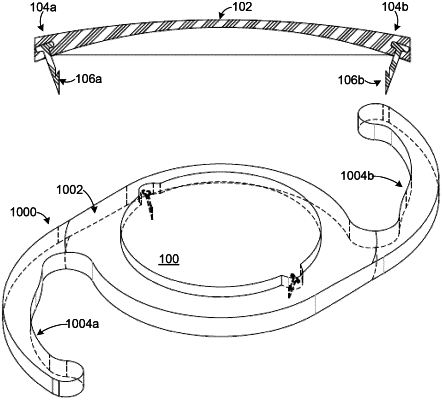| CPC A61F 2/1602 (2013.01) [A61F 2/1648 (2013.01); A61F 2/1694 (2013.01); A61F 9/0017 (2013.01); A61F 2002/1681 (2013.01); A61F 2002/16902 (2015.04); A61F 2220/0016 (2013.01)] | 27 Claims |

|
1. An apparatus comprising:
an intraocular pseudophakic contact lens comprising:
a first optical lens formed of a first lens material;
multiple projections radially extending from a peripheral edge of the first optical lens and comprising the first lens material, an anterior surface of each projection continuous with an anterior surface of the first optical lens, at least a portion of a posterior surface of each projection positioned below a posterior surface of the first optical lens; and
multiple anchors partially embedded in or configured to pass through the projections, the anchors configured to pierce second lens material forming a second optical lens of an artificial intraocular lens that is not specifically designed to be coupled to or receive the intraocular pseudophakic contact lens in order to secure the intraocular pseudophakic contact lens to the artificial intraocular lens, the anchors comprising substantially straight pins that angle inward from the projections at opposing angles toward an optical axis of the first optical lens;
wherein different portions of the first optical lens have different refractive powers such that a first portion of the first optical lens has a first refractive power and a second portion of the first optical lens has a second refractive power different from the first refractive power.
|